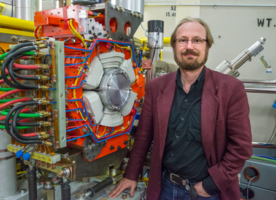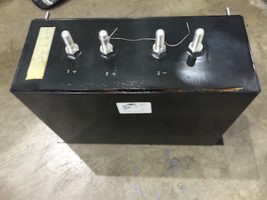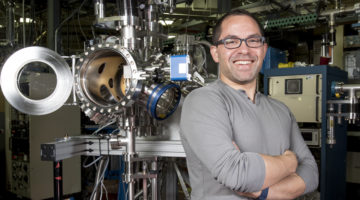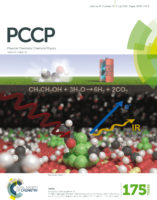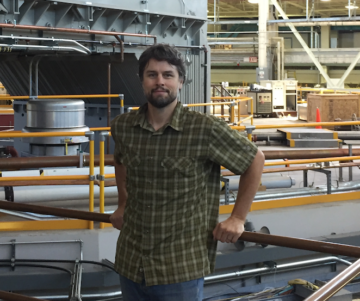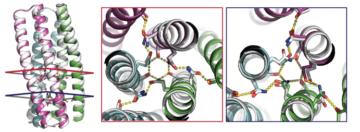Members of the ALS Brightness Improvement Team have been recognized by the Department of Energy with a prestigious Secretary of Energy Achievement Award. This distinction follows the team’s receipt last December of a Berkeley Lab Director’s Award for Exceptional Scientific Achievement. Read more »
All News & Updates
ALS Beamstop Device an R&D 100 Finalist
A beamstop device recently developed at the ALS has successfully combined two essential crystallographic functions–capturing the damaging portion of the beam while simultaneously monitoring its intensity–into a single miniaturized package. The technology has been licensed and launched commercially and is also a finalist for an R&D 100 Award. Read more »![]()
Shedding Light on Postdocs
Postdocs are a significant portion of Berkeley Lab’s workforce, and the same is true at the ALS, where 42 postdocs are currently employed by or receiving a stipend from the ALS. To provide a forum and resources for this large contingent at the Lab, the Berkeley Lab Postdoc Association (BLPA) was recently established by a small group of postdocs. Read more »
ALS Engineers Resolve Power Supply Failure, Bring ALS Back Online
On Thursday, July 28, the power supply to the ALS booster bend magnets failed. Over the course of nearly six days, more than 20 ALS staff worked long hours to resolve the failure and get the ALS back online. Read more »
Researchers Peel Back Another Layer of Chemistry with ‘Tender’ X-Rays
Scientists can now directly probe a previously hard-to-see layer of chemistry, which forms in a narrow band where liquid meets solid, thanks to a unique x-ray toolkit developed at Berkeley Lab. Read more »
A Surface Treatment for Improving Fuel-Cell Cathodes
Solid-oxide fuel cells (SOFCs) are a promising path toward the “clean” conversion of chemical energy to electrical energy with little or no carbon dioxide emission. With the help of the ALS, researchers from MIT recently found a way to treat SOFC cathode surfaces so that they perform better and last longer. Read more »![]()
![]()
Ambient Pressure XPS and IRRAS Investigation of Ethanol Steam Reforming on Nickel–Ceria Catalysts
Ambient-pressure x-ray photoelectron spectroscopy (AP-XPS) and infrared reflection absorption spectroscopy (AP-IRRAS) have been used to elucidate the active sites and mechanistic steps associated with the ethanol steam reforming reaction (ESR) over Ni–CeO2(111) model catalysts. Read more »
Tom Scarvie, Operations Supervisor
As operations supervisor at the ALS, Tom Scarvie works with the accelerator operators and floor operators to make sure that the machine runs as well as possible and that beamline work is done safely and according to policy. The operations team strives to make sure the ALS is running reliably and at top quality all the time. Scarvie is also one of three chairs of the ALS Beamline Review Committee and he chairs the Accelerator Review Committee. Read more »
Improving Alloy Memory by Tuning Material Composition
Shape memory alloys can “remember” their original form and return to it repeatedly when heated. To gain structural insight into a new alloy capable of sustaining millions of cycles without failure, researchers performed x-ray Laue microdiffraction at ALS Beamline 12.3.2. Read more »
Validation of Novel Proteins Inspired by Nature
Designed proteins containing hydrogen-bonding modules have been validated by crystallography and SAXS. The ability to design synthetic molecules that combine the specificity of DNA-like binding with protein function opens up huge opportunities for the fields of synthetic biology and materials science. Read more »
- « Previous Page
- 1
- …
- 116
- 117
- 118
- 119
- 120
- …
- 139
- Next Page »
